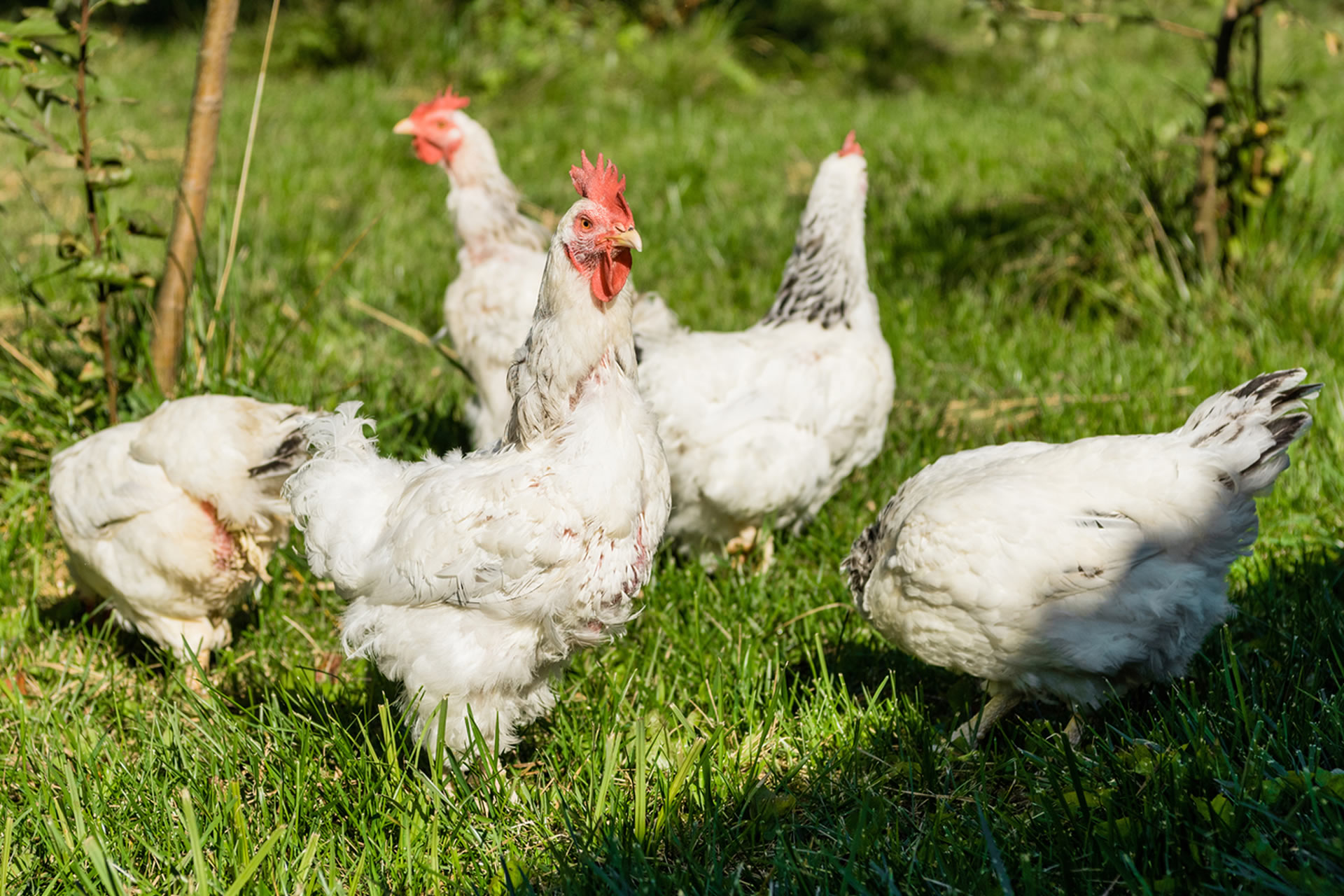16
Oct
Organic Poultry Significantly Less Likely than Chemical-Intensive to Contain Antibiotic Resistant Bacteria, But Improvements Still Needed
 (Beyond Pesticides, October 16, 2019) Organic poultry is far less likely than conventionally raised meats to contain antibiotic-resistant Salmonella, according to research presented last week at a conference for the Infectious Diseases Society of America. With bacterial resistance to common antibiotics on the rise, in large part due to misuse in agriculture, consumers are looking for the best choice to feed themselves and their families. While researchers did find organic poultry production to result in fewer instances of antibiotic resistance, there are still improvements that must be made in organic to further reduce and ultimately eliminate the threat of bacterial resistance and align organic standards with consumer expectations.
(Beyond Pesticides, October 16, 2019) Organic poultry is far less likely than conventionally raised meats to contain antibiotic-resistant Salmonella, according to research presented last week at a conference for the Infectious Diseases Society of America. With bacterial resistance to common antibiotics on the rise, in large part due to misuse in agriculture, consumers are looking for the best choice to feed themselves and their families. While researchers did find organic poultry production to result in fewer instances of antibiotic resistance, there are still improvements that must be made in organic to further reduce and ultimately eliminate the threat of bacterial resistance and align organic standards with consumer expectations.
“Although contamination of retail poultry was found in both conventionally raised and antibiotic-free samples, our results show that Salmonella in poultry produced without antibiotics – based on packaging claims – were significantly less resistant to antibiotics compared with poultry raised using conventional methods,” said Xin Yin, MPH, lead author of the study and DrPH candidate at Penn State College of Medicine, Hershey, Pennsylvania. “Consumers should read production labels and make informed choices based on the evidence about the risk of poultry contamination with drug-resistant Salmonella.”
For the study, researchers analyzed samples conducted on randomly purchased turkey and chicken in the state of Pennsylvania between 2008-2017. Of the 2,733 conventional samples tested, roughly 10%, 280, of those samples were contaminated with Salmonella compared to 5.3%, 40, of the 748 organic samples tested. Within these numbers, over half, (55%), 154 of the 280 conventional Salmonella detects, were resistant to three or more antibiotics. The same was true for only 11 of the 40 organic samples (28%) that tested positive for the bacteria. Nearly 25% of conventional Salmonella samples displayed some level of resistance to the last resort antibiotic ceftriaxone. Three of the 40 organic samples contained this level of resistance.
“These findings underscore how important it is to use antibiotics judiciously, not only in human medicine but in food-producing animals,” said Nkuchia M. M’ikanatha, DrPH, MPH, an author on both studies and an epidemiologist with the National Antimicrobial Resistance Monitoring System (NARMS), Harrisburg, Pennsylvania. “We found a significant percentage of Salmonella bacteria in meat that causes infection in humans were resistant to three or more antibiotics, meaning treatments may not work for some patients who really need them.”
Antibiotics are used in animal agriculture under the guise of treating infections but are often employed within a confined animal feeding operation (CAFO) that stresses animals. In this context, antibiotics are used to lower environmental stressors and allow animals to put on weight. Near the time of this report’s presentation, Beyond Pesticides reported on another study that raised a red flag on global antibiotic resistance, noting problems in chicken production and certain hotspots like China, Pakistan, Turkey, Brazil, Egypt, Vietnam, Mexico, and South Africa.
While the data point to organic being a safer choice, it is evident there is a need to strengthen organic standards to further reduce and eliminate bacterial contamination. Beyond Pesticides has encouraged organic consumers to get active in the standard setting process and urge the board to finalize organic animal welfare rules. Despite publishing a final rule, USDA Secretary Sonny Perdue has refused to implement this important law.
Many poultry producers are receiving certified organic status while operating under conditions similar to factory farms. By setting minimum indoor and outdoor space requirements and defining “outdoors,” the rule being championed by consumer advocates would make it more difficult for factory egg and poultry farms to be certified organic.
Implementation of this rule is critical for human and environmental health, as well as the wallets of certified organic farmers. Otherwise, real organic farmers following the letter, spirit and intent of organic practices will have the reputation of their their truly safer products sullied by those concerned only with gaining a price premium for their meat.
Take action to fight back against organic CAFOs and other practices that damage organic integrity by visiting Beyond Pesticides Keeping Organic Strong webpage. Although the comment period is closed, you can still follow along with the issues, or register to speak in person at the upcoming National Organic Standards Board meeting taking place in Pittsburgh, PA next week, October 23-25th.
Source: Infectious Disease Society of America
All unattributed positions and opinions in this piece are those of Beyond Pesticides.










